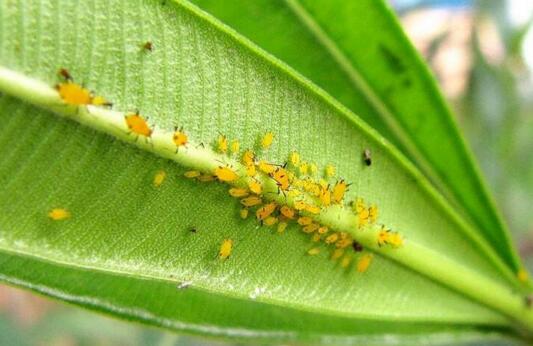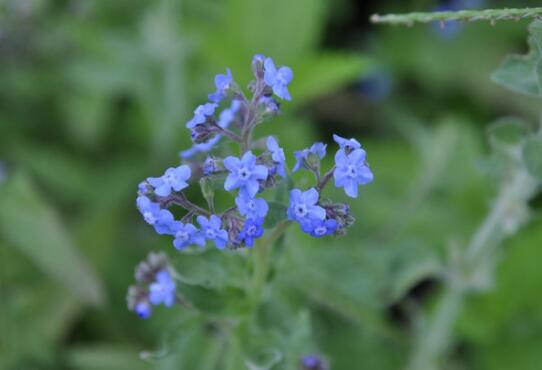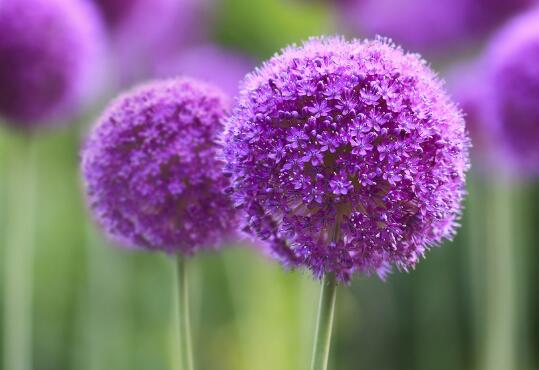What to do with the growth of Photinia rubra? control of diseases and insect pests of Photinia rubra / 7 methods
The ability of Photinia chinensis to adapt to the environment is relatively strong, it can be planted in many places, such as streets, indoor, balcony and so on, but no matter how strong the ability to adapt, there may still be diseases and insect pests, how to do when Photinia rubra grows? Here we introduce the common prevention and control methods of diseases and insect pests of Photinia rubra.
What if Photinia rubra has grown worms?
I. aphids

Usually it will appear in the young leaves or new buds of Photinia rubra, which will cause the leaves to be greasy and not bright red, and leave black or yellow spots on the leaves, seriously yellowing and falling off the leaves.
Control method: ① sprinkled plant ash on the plant, then washed with clean water, then sprayed with neem leaf juice; ② was sprayed with a solution diluted to 1500 times with 40% dimethoate or omethoate.
Root-knot nematode
The main harmful part is the root of Photinia rubra, which is characterized by the obvious increase of lateral root and fibrous root, conical white root nodule on the fibrous root of young root, slow growth and dwarfism of plant, and abnormal leaf color.
Control methods: before ① planting, turn the soil deeply and at least turn the topsoil below 25 cm, which can reduce the emission of insect pests; ② sprays 10 grams of phosphorus, 3 percent millet, 5 percent Yishubao and other granules evenly in the soil, which has a good preventive effect on root-knot nematodes.
Third, longicorn beetles
It does great harm to the branches of Photinia chinensis, which will affect the normal growth of the plant and bring other germs. when there is a wound in the branches, these bacteria will cause other diseases, in the prevention and control of diseases and insect pests. Its harm time is the longest.
Prevention and control methods: ① to strengthen maintenance and management, the use of scientific red leaf Photinia culture method can make the growth more vigorous, and longicorn beetles usually only harm weak plants; ② with 50% phoxim or 50% isocarbophos diluted into 1000 times solution spray.
Scale insects
It will cause yellowing of branches and leaves, abnormal growth and shedding of leaves, which is one of the more common insect pests that need to be paid attention to, because it can reproduce 2-7 generations in one year, and it will be very difficult to propagate in large quantities.
Control methods: ① regular fertilization to improve the resistance of Phyllostachys pubescens; ② used scale diluted to 750-1000 times solution for spraying; ③ to strengthen pruning and let the environment ventilated and transparent, can reduce the incidence of insect pests.
Prevention and control of diseases and insect pests of Photinia rubra
1. Grey mold
Leaves and petioles appear gray water stains, tissue softening and decay, and then gray mold disease spots appear on the surface, water spots will also appear at the base of petioles with more young stems, and the diseased seedlings will eventually rot and wither and die.
Prevention and treatment methods: ① should clean up the residual branches and leaves before planting, remove diseased leaves and diseased flowers in time, etc.; ② chooses 50% isobarbazide or 20% pyrimidine to spray with water and use 5% pyrimidine once every 7 days to prevent; ③ gray mold usually invades the branches and leaves or stigmas of residual petals, so cutting off the fruit pedicel can control the incidence of gray mold.
2. Brown spot
Starting from the leaves below Photinia rubra, it slowly extends upward, with oval purple-brown markings at first, then turns black and the markings connect into one, and then the leaves become withered and yellow and fall off, and the tender leaves cannot grow normally.
Control methods: ① less nitrogen fertilizer, in high temperature and humidity, we should pay attention to the good ventilation of the environment; the initial stage of ② disease with Dyson zinc and manganese diluted into 800x solution spray, generally about once every 7 days, three times can basically control the disease.
3. Root rot
Branch root or fibrous root rot phenomenon, and then the main root will be affected, even if the new buds just sprouted, will quickly yellow and grow slowly, but return to normal at night.
Prevention and control methods: ① must not allow stagnant water in the soil, pay attention to drainage and waterlogging in the rainy season; before or at the initial stage of the onset of ②, use 1500-3000 times irrigation of roots, 200ml of medicine solution per plant. When the disease is serious, the diseased plants should be removed and root irrigation should be carried out at the same time.
What if the orchid grows worms? disease and pest control of orchids / 2 insect pests and 2 diseases
In the process of breeding ball orchids, the last thing people want to encounter must be such problems as diseases and insect pests. This problem not only affects beauty, but also poses a great threat to what the plants are, so what about the ball orchids? How to control the diseases and insect pests of orchids? Next, the editor will take you to learn about it.
1. What if the orchid grows worms?
II. Disease and pest control of orchids
Insect pest
1. Shell worm
The shell insect is a common pest among the diseases and insect pests of the ball orchid. It mainly feeds on the juice in the leaves of the ball orchid, and gradually absorbs it with mouthparts deep into the leaves, which leads to the phenomenon of ball orchid wilting due to lack of nutrients.
Control method: in the control of this pest, we can use 3% pyrethroid 1000 times solution to spray.
two。 Aphids
Aphids are a big pest in many plants, and orchids are no exception. it mainly threatens the seedlings of orchids, which will gradually suck the sap in the seedlings, resulting in the seedlings can not grow and die. It can be seen that the harm of aphids is still great among the diseases and insect pests of bulbous orchids.
Prevention and control methods: the harmful period of aphids is at the turn of spring and summer every year, so we must pay special attention to this period of time. When dealing with this kind of pest, we can use 1000 times of trichlorfon to spray. Generally, three times in a row can completely eliminate this pest.
Disease
1. Anthrax
Among the diseases and insect pests of orchid, anthracnose is a kind of disease with high incidence. At the initial stage of the disease, many black spots will appear on the leaves of orchid, and will spread gradually with the passage of time, and finally lead to the phenomenon of plant death.
Prevention and treatment: in the prevention and control of this disease, we can use 1000 times of methyl topiramate to spray orchids, usually once every 7-10 days, and can be basically cured after 2-3 times.
two。 Soft rot
The high incidence period of soft rot is in the summer every year, so during this time, we must pay special attention to the appearance of many watery spots on the leaves of orchids, which spread very fast. it will eventually lead to the phenomenon of rot and death of the plant.
Prevention and control methods: in the prevention and control of this disease must be timely, if the time is prolonged, it will be difficult to cure, we can use methyl parathion 1000 times spray to control orchids.
How to make the arrow lotus grow worms, so that the arrow lotus diseases and insect pests control / 2 insect pests 2 diseases
In the process of breeding the arrow lotus, the last thing people want to encounter is the problem of diseases and insect pests, which do great harm to the plant, not only affect the ornamental, but also pose a fatal threat to the plant if it does not come out for a long time. So what about the arrow lotus bug? What do you need to do to control the diseases and insect pests of the arrow lotus? Next, the editor will take you to learn about it.
What should I do if the arrow lotus grows bugs?
2. Disease and pest control of Ling Arrow Lotus
Insect pest
① root nematode
Among the diseases and insect pests of the arrow lotus, the root nematode is a relatively common pest. It is a dioecious pest, which does great harm to the arrow lotus. It will make its growth slow, the leaves gradually yellow, and the fruit less. Finally, it leads to the early death of the plant.
Control methods: in the prevention and control of this pest must be as early as possible, the longer the event, the greater the harm to the plant, in the control, we can use 80% dibromochloropropane EC 1000 times liquid to directly spray the pest.
② aphid
Aphids are a kind of pest that exists in many plants, and the arrow lotus is no exception. This kind of pest mainly feeds on the juice of the arrow lotus, which leads to the loss of nutrients and the phenomenon of yellowing and wilting. This kind of pest is one of the most harmful diseases and insect pests.
Control method: in the control of aphids, we can use 1000 times of 50% fenitrothion EC to directly spray it.
Disease
① stem rot
Among the diseases and insect pests of the arrow lotus, stem rot is also a high incidence disease. when this disease occurs, a dark gray spot appears on the new part of the arrow lotus, which looks like a scald. if it doesn't come out for a long time, it will gradually lead to plant death.
Control method: when dealing with stem rot, we can use 1000 times of carbendazim wettable powder to spray the arrow lotus, usually once every 7-10 days, and then recover after 2-3 times.
② brown spot
Brown spot is a kind of disease caused by fungi, which is a kind of great harm among the diseases and insect pests of arrow lotus. Many brown spots will appear on the leaves of arrow lotus during the disease, and will spread gradually with the passage of time. Finally, the leaves of the plant yellowed and fell off, and the plant atrophied and died.
Control method: in the prevention and control of this disease, we can use 2000 times of 50% Sukeling to spray the diseased plant, generally spray once in 12-15 days, and then recover after 1-2 times.
- Prev

Is the kettle poisonous? can the kettle be planted indoors / non-toxic can be planted indoors
The inverted kettle is a common flower plant in our life, which is highly ornamental, and because of this, many people want to keep one at home, but now many plants on the market are poisonous. so we need to be clear about this before we breed it. About the kettle being poisonous?
- Next

The effect of pest control of Qianrihong is remarkable.
In the process of breeding thousand-day red, if people do not want to encounter the problem, it must be diseases and insect pests, this kind of problem is extremely harmful to the plant, if it is not dealt with in time, it can easily lead to the phenomenon of plant withering and dying, so what about the thousand-day red worm? What should be done in the prevention and control of diseases and insect pests
Related
- Fuxing push coffee new agricultural production and marketing class: lack of small-scale processing plants
- Jujube rice field leisure farm deep ploughing Yilan for five years to create a space for organic food and play
- Nongyu Farm-A trial of organic papaya for brave women with advanced technology
- Four points for attention in the prevention and control of diseases and insect pests of edible fungi
- How to add nutrient solution to Edible Fungi
- Is there any good way to control edible fungus mites?
- Open Inoculation Technology of Edible Fungi
- Is there any clever way to use fertilizer for edible fungus in winter?
- What agents are used to kill the pathogens of edible fungi in the mushroom shed?
- Rapid drying of Edible Fungi

